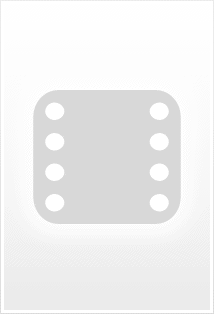T-Men is a wonderful film. Although Mann utilises many of the semi-documentary school's technical contrivances (the opening legend, authentic backgrounds, off-screen narration, tight editing) and much of its philosophic outlook (rugged hero, tight-lipped, unexpressive; refined villain, his voice carefully shaded to suggest every nuance of depraved elegance), he has yet managed to inject the film with a distinctly personal style.
Our first indication that the picture is being directed by an unusually imaginative artist with both an expressive visual flair and the editing know-how to sustain it, comes in the restaurant scene where "The Schemer" makes contact with a photographer's girl. Instead of the usual flat establishing long shot with the hero walking up to the entrance, cut to the interior and pan, Anthony Mann has treated the sequence almost surrealistically; - with an opening shot of the restaurant's neon sign, rapid cut to its swinging door as O'Keefe strides through, tracking shot following the investigator into the interior - a confused medley of sight, sound and voices, - rapid pan as O'Keefe jostles his way to a telephone booth, closing the glass door so that a reflection of the whole dizzying scene swings into focus. Obviously, neither Hathaway, Keighley, nor any other of the semi-documentarists would have handled the scene this way, although heretofore it appeared that Mann was directing the film along established lines - or so it seemed at the time.
On a recent re-viewing of the film, however, I found that even in earlier scenes, Mann had been more daring than Hathaway in his choice of low angles, longer takes (the first interview with the unctuous gang-leader, - beautifully composed and photographed), and the remarkable no-dialogue sequence where a tip-off is passed to a crooked detective in the locker-room of a Turkish bath; - an intensified use of natural sound taking the place of both dialogue and music. (As is usual in this type of film, the composer - here, Paul Sawtell - is relegated to providing a few bars for the brass section to play under the credits). There follows a wonderful montage of low-angled long shots as Treasury agents try to trace "The Schemer" through his known addiction to Oriental herbs.
Our first indication that the picture is being directed by an unusually imaginative artist with both an expressive visual flair and the editing know-how to sustain it, comes in the restaurant scene where "The Schemer" makes contact with a photographer's girl. Instead of the usual flat establishing long shot with the hero walking up to the entrance, cut to the interior and pan, Anthony Mann has treated the sequence almost surrealistically; - with an opening shot of the restaurant's neon sign, rapid cut to its swinging door as O'Keefe strides through, tracking shot following the investigator into the interior - a confused medley of sight, sound and voices, - rapid pan as O'Keefe jostles his way to a telephone booth, closing the glass door so that a reflection of the whole dizzying scene swings into focus. Obviously, neither Hathaway, Keighley, nor any other of the semi-documentarists would have handled the scene this way, although heretofore it appeared that Mann was directing the film along established lines - or so it seemed at the time.
On a recent re-viewing of the film, however, I found that even in earlier scenes, Mann had been more daring than Hathaway in his choice of low angles, longer takes (the first interview with the unctuous gang-leader, - beautifully composed and photographed), and the remarkable no-dialogue sequence where a tip-off is passed to a crooked detective in the locker-room of a Turkish bath; - an intensified use of natural sound taking the place of both dialogue and music. (As is usual in this type of film, the composer - here, Paul Sawtell - is relegated to providing a few bars for the brass section to play under the credits). There follows a wonderful montage of low-angled long shots as Treasury agents try to trace "The Schemer" through his known addiction to Oriental herbs.
